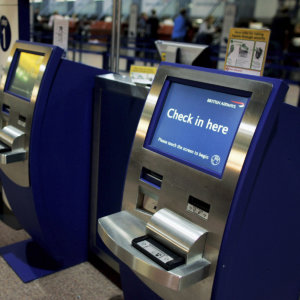How Customers View Self-Service Technologies
There can be substantial differences between managers’ and customers’ perspectives on new self-service technologies.
For many companies, the idea of self-service technology seems like a win-win proposition. Kiosks, websites, mobile apps, and other self-service technologies now let service businesses streamline transaction processes, reduce overhead, and potentially increase revenue — all while giving the customer more control over the service process. In reality, however, there are numerous examples of self-service technologies that have not delivered expected business benefits. For example, the Albertsons LLC grocery store chain, based in Boise, Idaho, decided to remove self-checkout kiosks from its stores in an effort to enhance customers’ overall shopping experience.
Are customers shying away from self-service? No. In fact, customers often prefer self-service to employee-led options. For instance, rental car brands such as Alamo and Enterprise report that self-service kiosks can reduce check-in times by half, leading to greater customer satisfaction with the rental process. Consumers are not running away from self-service options — just poorly implemented ones. Poorly implemented self-service technologies result in frustrated customers or customers who ignore them, as well as unrealized revenue and cost savings for businesses. This raises the question: Do managers really understand what customers want in a self-service offering? From a manager’s perspective, a new self-service medium can create excitement and give tech-savvy customers more options in a desired experience. But managers may not have a good grasp of what customers require in a self-service technology.
To examine whether differences exist between managers’ perceptions of what customers want in a self-service experience and what customers actually want, we surveyed two groups about what they thought customers wanted in a self-service experience: restaurant managers who recently implemented a self-service ordering technology that lets patrons place their own food orders, and customers who used that technology. The survey items for both groups measured concepts such as technology anxiety, need for human interaction, convenience, speed of transaction, perceived accuracy, satisfaction, and trust perceptions.
For the first survey, we sent an invitation to selected subscribers of Nation’s Restaurant News, a popular trade journal. A total of 204 restaurant managers who recently implemented the self-service technology responded. Due to incomplete responses, three surveys were dropped, leaving a total sample of 201. The respondents were fairly evenly split between independent (45%) and chain restaurants (55%). Of the respondents from independent restaurants, about 55% were owners while another 23% were general managers.

